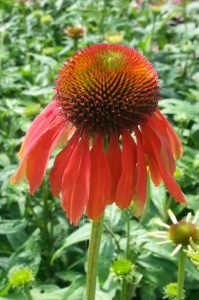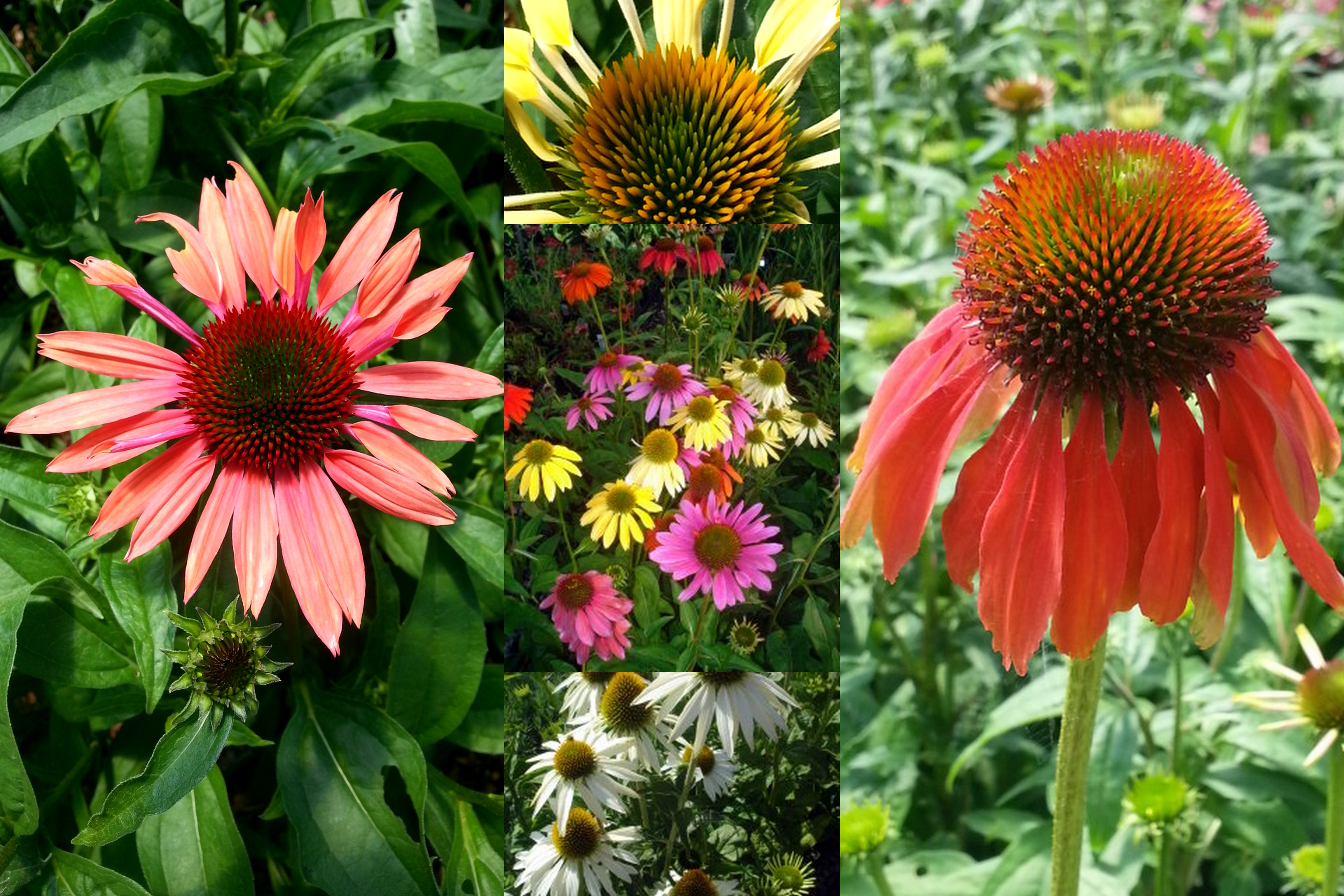The Bold and the Beautiful – Echinacea!
Echinacea is a genus, or group of herbaceous flowering plants in the daisy family. The Echinacea genus has nine species, which are commonly called purple coneflowers. They are found only in eastern and central North America where they are found growing in moist to dry prairies and open wooded areas. They have large, showy heads of composite flowers blooming from early to late summer. These flowering plants and their parts have different uses. Some species are cultivated in gardens for their showy flowers. Echinacea purpurea is used in homeopathic medicine.
Description
Echinacea, also known as coneflower, are bold and beautiful flowering plants that will attract bees, birds and butterflies to your garden. They have been used in perennial gardens for over 200 years and is a true native North American plant with around nine different species. The name “Echinacea” is derived from the Latin word “echinos” which means sea urchin/hedgehog referring to the flowers spiny cone.
Cultivation
Long popular in cottage gardens but perfect in any garden this hardy, drought tolerant, perennial plant has a long blooming season with flowers sometimes emerging right into fall. The daisy like flowers will make an eye catching addition to your garden. They show well with ornamental grasses and other late season plants like miscanthus and rudbeckia.
Echinaceas need full sun and fertile, well-drained soil.
Avoid damp spots and heavy mulching over crowns in winter.
Deadhead to encourage flowering into the autumn after the main August-September season.
Once planted, they are best left alone, they do not transplant well.
E. purpurea and many hybrids flower the first year from seed. The elegant E. pallida is slower to establish but may be very long-lived.
Give yellow, orange and apricot hybrids extra-sharp drainage.

The spiny center of the head showing the paleae, from which the name derives.
History
Echinacea has a long history of being used as an herbal remedy. It is known to boost immune systems and to fight the common cold and flu viruses. It is also proven to act as an anti-inflammatory and anti-septic. Today there are more than 200 remedies derived from the Echinacea Purpurea extract.
